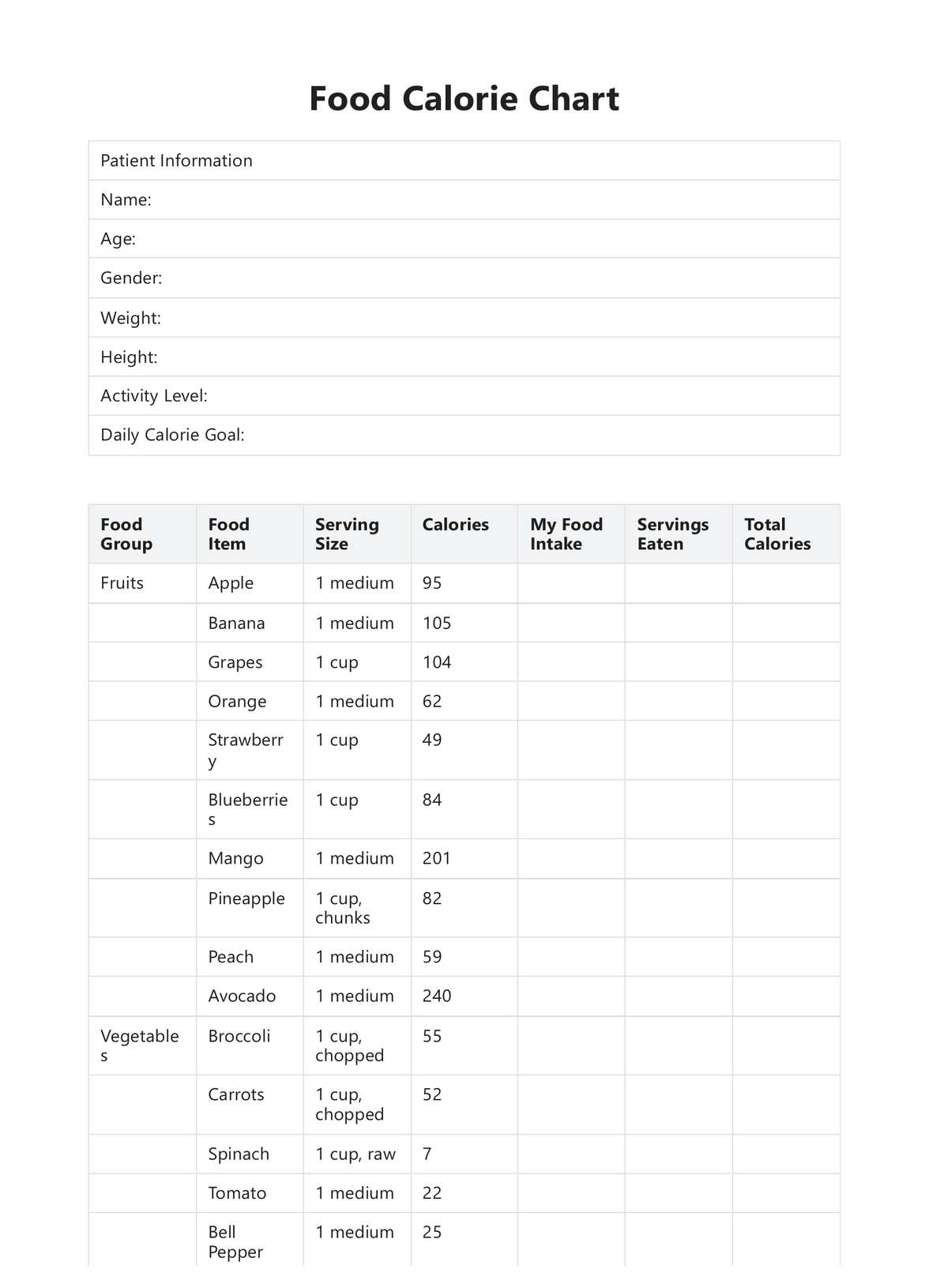Calories per serving indicate the amount of calories in one serving of the food, while calories per container show the total calories in the entire package. If a container has multiple servings, the calories per container will be higher than per serving.

Food Calorie Charts
Discover how to use a Food Calorie Chart for effective dietary management. Learn why Carepatron is the go-to app for healthcare professionals. Start now!
Food Calorie Charts Template
Commonly asked questions
The number of calories needed for the body to function, known as the basal metabolic rate, varies depending on age, sex, weight, height, and activity level. On average, adult women need about 1,600–2,400 calories per day, and adult men require about 2,000–3,000.
To track calories in food accurately, use a food scale to measure portions, read nutritional labels carefully, and utilize a calorie tracking app or journal to record your intake. Consistently updating and monitoring your food diary enhances accuracy.
EHR and practice management software
Get started for free
*No credit card required
Free
$0/usd
Unlimited clients
Telehealth
1GB of storage
Client portal text
Automated billing and online payments











